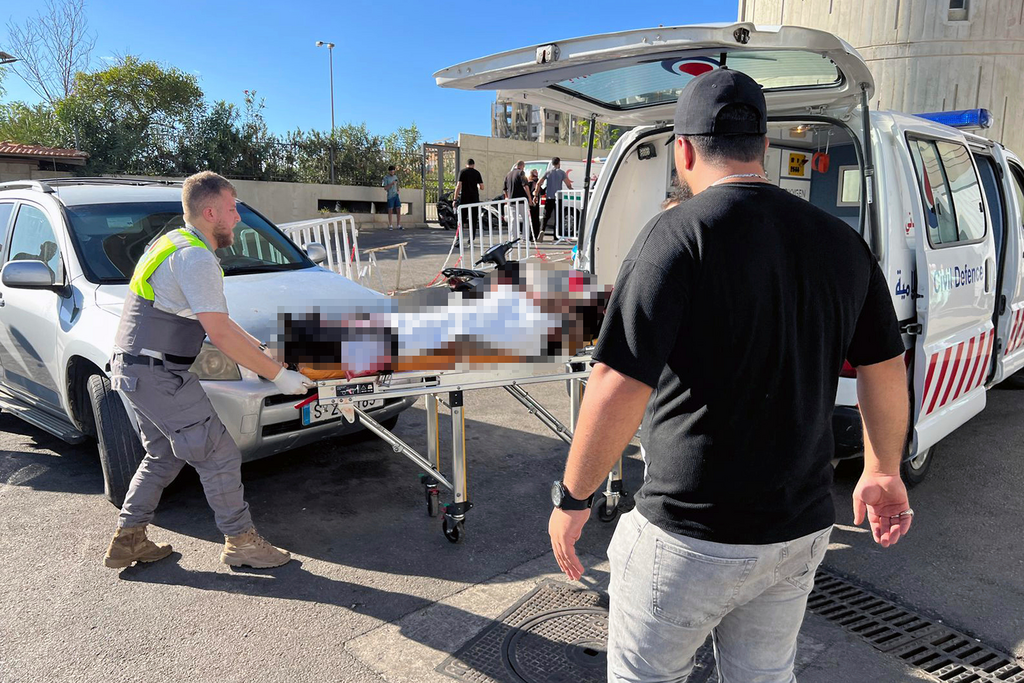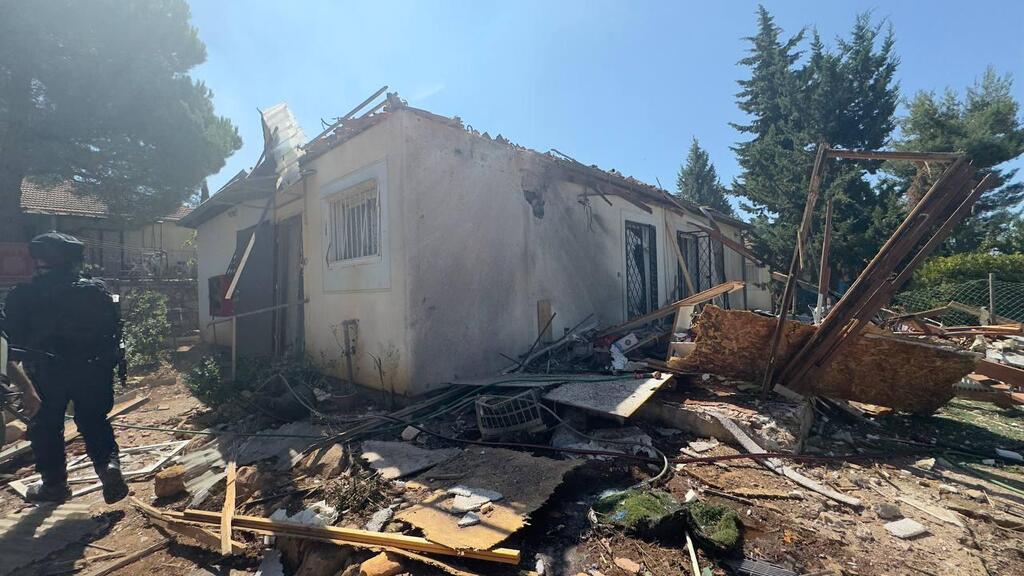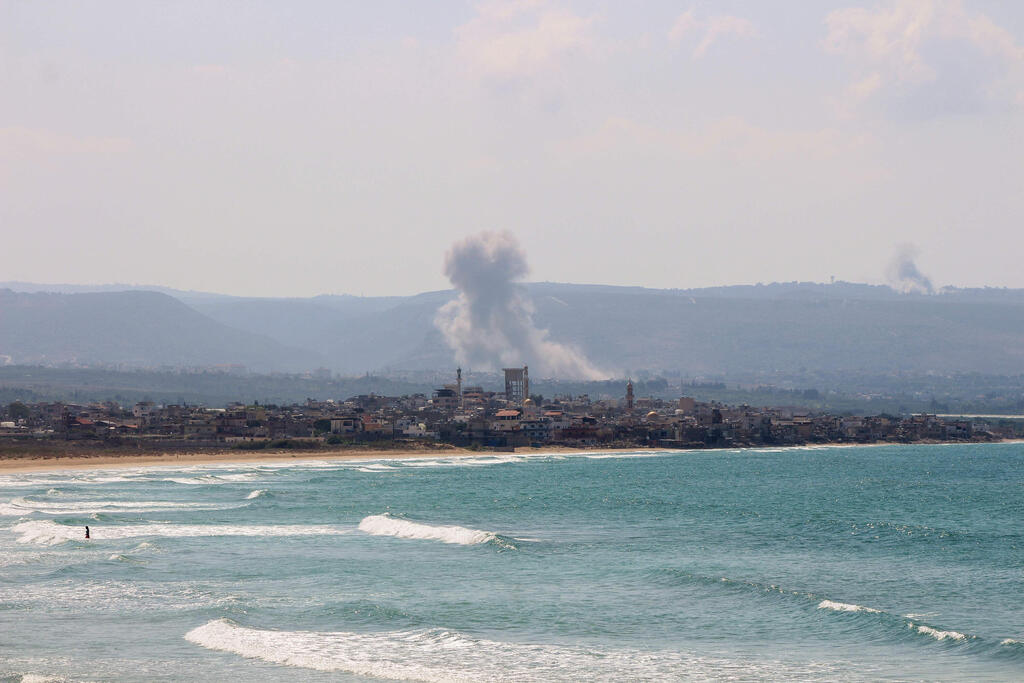Getting your Trinity Audio player ready...
Thousands of pagers belonging to Hezbollah members exploded simultaneously
Some 1,500 Hezbollah fighters have been disabled after their communication devices exploded en masse last week, with many losing their sight or suffering hand amputations from the blasts, a senior member of the Lebanese terrorist group told Reuters on Wednesday on condition of anonymity.
Hezbollah published a list of casualties over the past week, following the explosions, reporting 37 deaths from various regions across Lebanon. These include the Bekaa Valley, the Dahieh district in Beirut, multiple locations in southern Lebanon and the Akkar region in the north. According to various Lebanese reports, around 3,000 people have been injured by the explosions.
3 View gallery


First responders evacuate Hezbollah member hurt in pager blast in Beirut's Dahieh district
(Photo: AP /Hussein Malla)
While Reuters noted that the incident represents a “major blow” to Hezbollah, the disabled fighters represent only a small fraction of the group's total force, which, according to a recent report submitted to the U.S. Congress, numbers between 40,000 and 50,000 members. Hezbollah leader Hassan Nasrallah had previously claimed the organization had 100,000 fighters.
Three Hezbollah sources told Reuters that since October 7, the group has redeployed its fighters to “frontline areas in the south,” including some who have returned to Lebanon from Syria.
Additionally, Hezbollah has been rapidly moving more rockets into Lebanon in preparation for prolonged fighting. However, the sources emphasized that Hezbollah is seeking to avoid an all-out war.
Andreas Krieg, a senior lecturer at the School of Security Studies at King's College London, said that while Hezbollah operations had been disrupted by the past week's attacks, the group's networked organizational structure helped make it an extremely resilient force.
"This is the most formidable enemy Israel has ever faced on the battlefield, not because of numbers and tech but in terms of resilience."
IDF strikes 100 Hezbollah targets and counting
Amid reports of heavy losses for Hezbollah, Israel continued its extensive wave of airstrikes across southern and central Lebanon on Wednesday, with at least 10 people reported killed in the morning hours. By midday, the Israeli military said that its fighter jets had struck more than 100 targets in Lebanon, and the attacks were ongoing.
Safed home takes direct hit from Hezbollah rocket
(Video: Faran Raz)
In response, Hezbollah launched dozens of rockets and drones at northern Israeli communities, with one residential unit suffering a direct hit.
Earlier in the day, Hezbollah fired a ballistic missile toward central Israel, triggering sirens in the Tel Aviv metropolitan area and the Sharon region. The missile was intercepted by the David’s Sling missile defense system. Saudi network Al Hadath reported that the target was the Glilot military base.
Meanwhile, the pro-Hezbollah Lebanese newspaper Al Akhbar reported that over 95,000 people have been displaced from southern Lebanon as a result of the intensified Israeli strikes. The displaced are reportedly sheltering in schools turned into temporary shelters across Beirut, Mount Lebanon, Sidon, the Bekaa Valley, Baalbek, Hermel, Akkar and northern Lebanon.
The report added that internal security personnel, who were supposed to manage the situation according to the government's emergency plan, were absent, leaving the displaced to fend for themselves. Only “social solidarity and civic initiatives” have managed to alleviate the situation, the report said.
The newspaper also highlighted the economic impact of the displacement, noting that the influx of people into Beirut and its eastern suburbs has led to skyrocketing prices. The cost of bread has reportedly increased sixfold.
In a separate article, Al Akhbar described severe congestion at border crossings into Syria from the Bekaa Valley and northern Lebanon, with thousands of people crossing daily.







